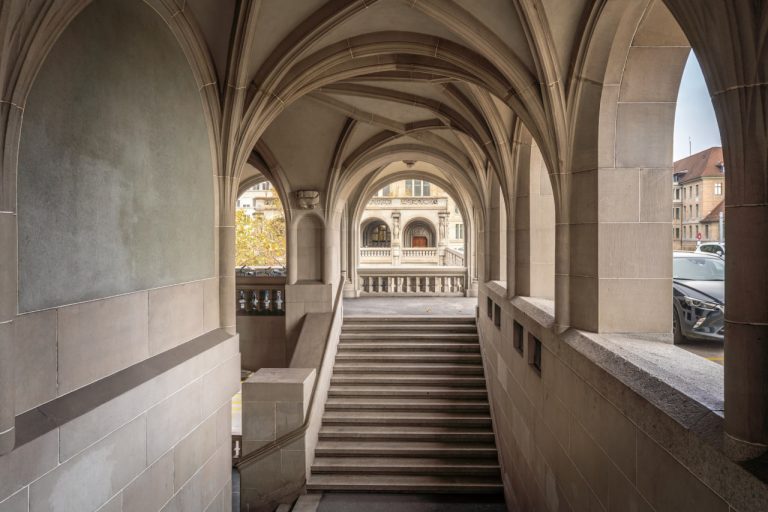Gothic architecture stands as one of the most remarkable and influential styles in the history of architecture. Emerging in the 12th century and flourishing until the 16th century, Gothic design transformed the way buildings were constructed, experienced, and understood. Characterized by soaring heights, intricate details, and innovative engineering, Gothic cathedrals remain awe-inspiring symbols of medieval craftsmanship and religious devotion. In this blog, we will explore the evolution of Gothic architecture, its defining features, and some of the most famous cathedrals that embody this iconic style.
Origins and Development of Gothic Architecture
Gothic architecture originated in the Île-de-France region of France during the mid-12th century, evolving from the earlier Romanesque style. It was first prominently seen in the reconstruction of the Basilica of Saint-Denis under the guidance of Abbot Suger, who sought to create a space filled with light and spiritual symbolism. This new architectural approach quickly spread across Europe, especially in France, England, Germany, and Italy, becoming the dominant style for cathedrals, churches, and civic buildings.
The evolution of Gothic architecture can be divided into several phases: Early Gothic, High Gothic, and Late Gothic (sometimes called Flamboyant or Perpendicular Gothic, depending on region). Each phase introduced refinements and innovations, responding to aesthetic desires, religious needs, and technological possibilities.
Key Features of Gothic Architecture
The hallmark of Gothic architecture lies in its revolutionary structural techniques and artistic expressions. These features allowed architects to build taller, lighter, and more elaborate buildings than ever before.
Pointed Arches
One of the most distinctive elements of Gothic architecture is the pointed arch. Unlike the rounded Romanesque arch, the pointed arch distributes weight more efficiently, enabling builders to construct higher ceilings and larger windows. This innovation allowed for more flexible and ambitious designs.
Ribbed Vaults
Ribbed vaults are another breakthrough. They consist of intersecting stone ribs that support the ceiling or roof. This system reduced the weight of the roof and transferred it to columns and piers, freeing wall space for expansive stained glass windows.
Flying Buttresses
Flying buttresses are external supports that counteract the lateral forces pushing walls outward. By transferring these forces away from the building, flying buttresses enabled walls to be thinner and pierced with enormous windows. This feature is visually striking and structurally vital.
Stained Glass Windows
Gothic cathedrals are renowned for their stunning stained glass windows, which filled interiors with colorful, ethereal light. These windows often depicted biblical stories, saints, and symbolic motifs, serving both decorative and didactic purposes.
Verticality and Light
Gothic architecture emphasizes verticality, drawing the eye upward toward heaven, symbolizing the divine. The combination of height, light, and intricate detailing created a transcendent atmosphere meant to inspire awe and spiritual contemplation.
Ornate Decoration
Gothic buildings are adorned with intricate sculptures, including gargoyles, saints, angels, and biblical scenes. These decorations add layers of meaning and artistic richness.
Famous Gothic Cathedrals
Many Gothic cathedrals stand today as testaments to the style’s grandeur and ingenuity. Here are a few of the most renowned:
Notre-Dame de Paris, France
Perhaps the most famous Gothic cathedral, Notre-Dame de Paris began construction in 1163 and was completed in the 14th century. It features iconic flying buttresses, magnificent rose windows, and an intricate façade. Despite damage in recent years, Notre-Dame remains a symbol of French cultural heritage.
Chartres Cathedral, France
Known for its remarkably preserved stained glass and harmonious proportions, Chartres Cathedral is a masterpiece of High Gothic architecture. Built between 1194 and 1220, it is celebrated for its sculptural program and architectural innovations.
Cologne Cathedral, Germany
Cologne Cathedral took over six centuries to complete, starting in 1248 and finishing in 1880. It is one of the largest Gothic cathedrals in Europe, renowned for its towering spires and elaborate interior.
Westminster Abbey, England
Westminster Abbey, while originally Romanesque, was extensively remodeled in the Gothic style from the 13th century onward. It has been the site of English royal coronations and burials for centuries, making it a historic as well as architectural landmark.
Milan Cathedral, Italy
Milan Cathedral, or Duomo di Milano, is one of the largest churches in the world and a striking example of Gothic architecture blended with local styles. Construction began in the late 14th century and continued for centuries, resulting in a uniquely ornate and imposing structure.
Legacy and Influence
Gothic architecture profoundly influenced later architectural movements, including the Gothic Revival of the 19th century, which sought to recapture its spiritual grandeur and craftsmanship. Its principles of light, structure, and ornamentation continue to inspire architects and designers today.




